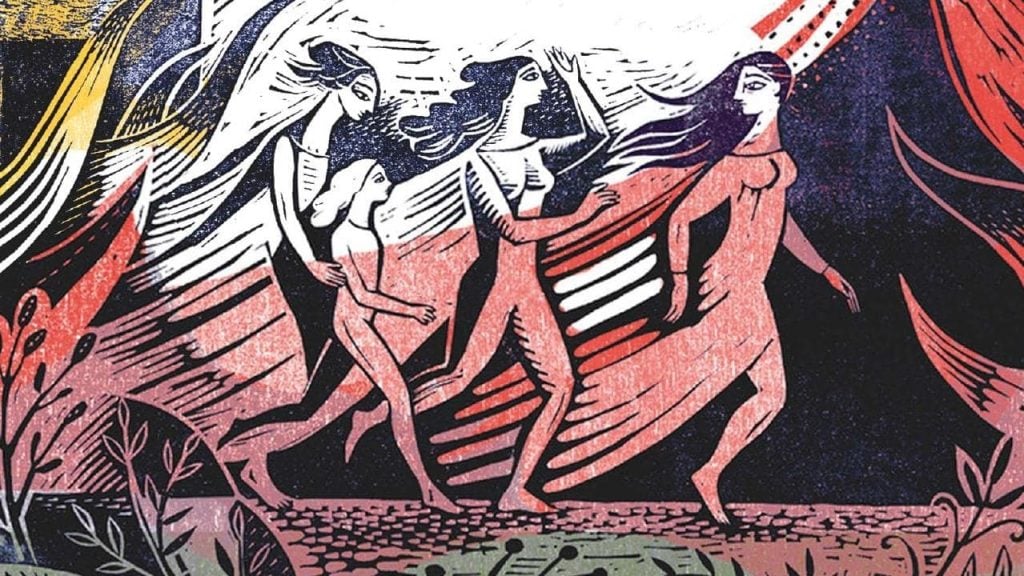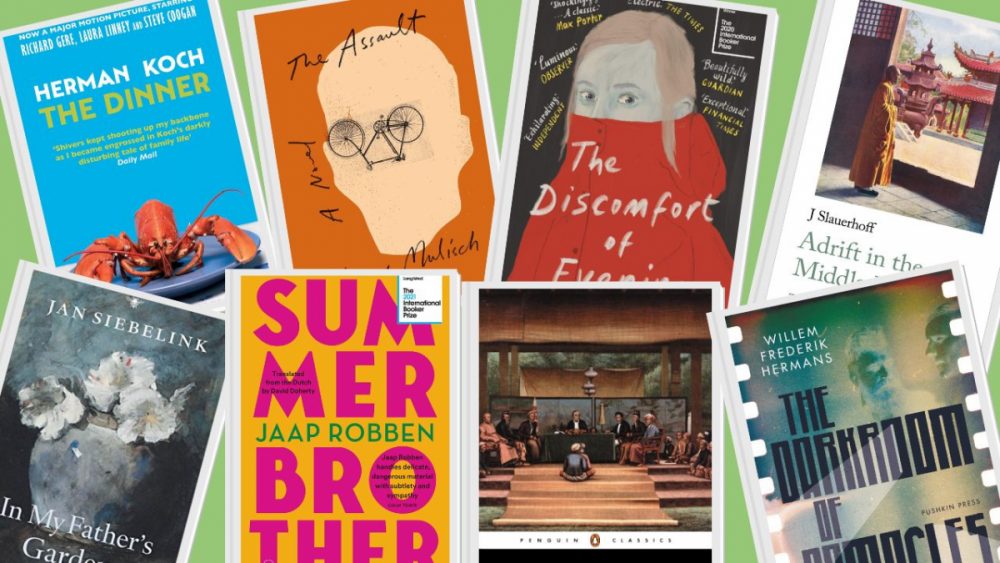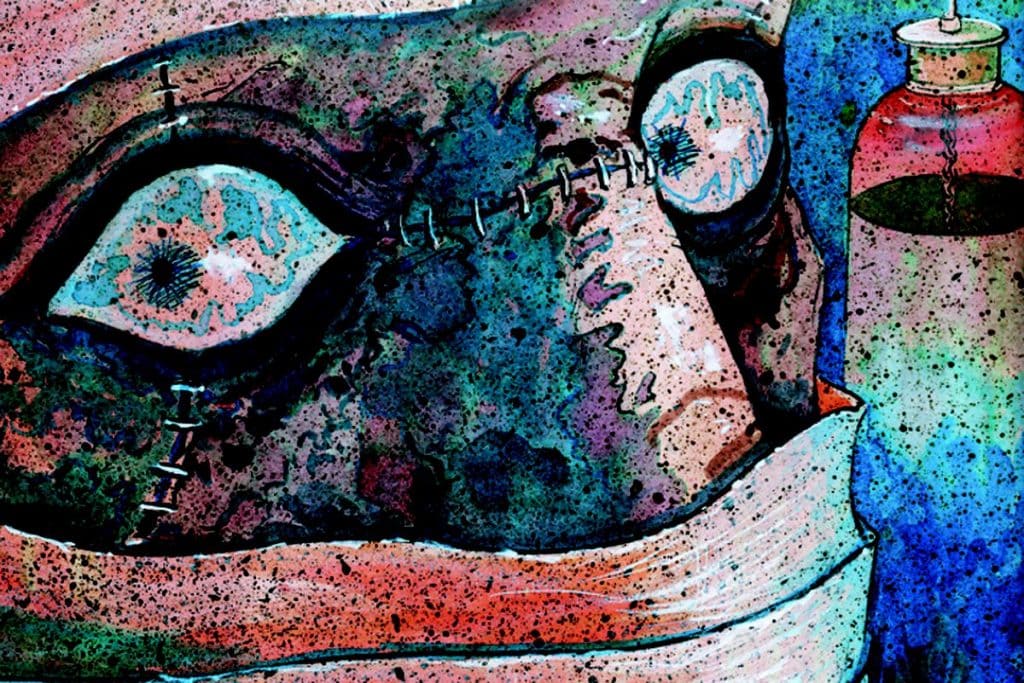The genre of yuri manga is always expanding, and at an increasing rate. While there have been classic girls’ love manga for decades, we are now very spoiled for choice. Wholesome sapphic love is taking over the world of romance manga, and we’re absolutely here for it!
However, just like with straight romance manga and BL manga, you need to separate the wheat from the chaff in order to find the most warming, most wholesome, most tear-jerking, most sexy, and best yuri manga on the shelves right now. And that’s just what you’ll find here, on this list of essential yuri manga, both classic and modern. But, before we begin…
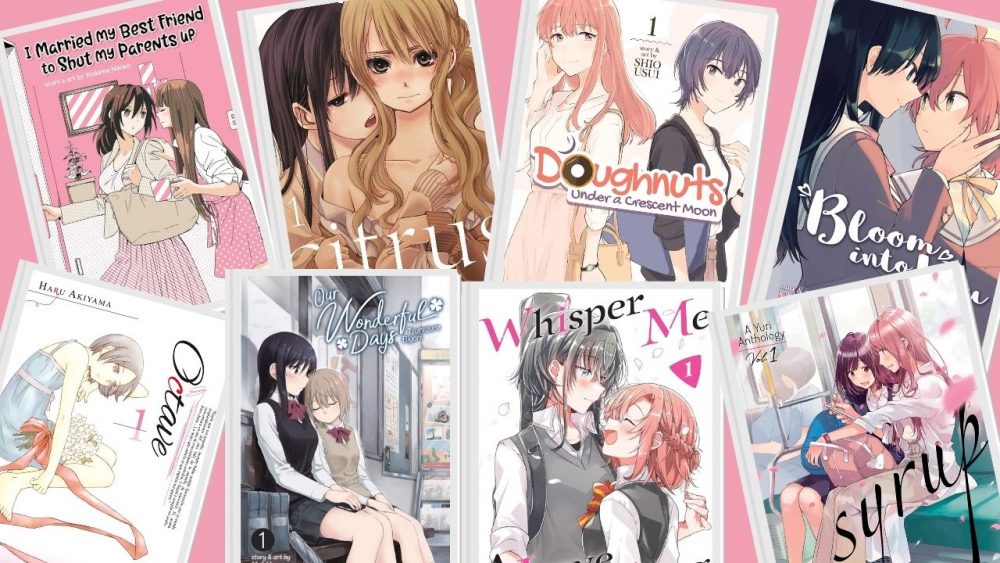
What is yuri manga?
Put simply, yuri manga is a genre of romance manga that focuses on lesbian relationships. It’s lesbian manga. Occasionally, it’s lewd, sexy, and erotic (and that’s often what comes to mind for some readers), but certainly not always.
Much of the yuri manga genre is comprised of wholesome lesbian romance. A lot of yuri manga centres around younger protagonists — high school or university students — but there are also adult yuri manga as well. The name ‘yuri manga’ comes from the Japanese word for lily: yuri (百合). Lilies are associated with femininity and romance, so it makes sense to tie that symbolism to lesbian romance manga and anime.
Yuri manga can also be considered a sub-genre of the wider shoujo manga genre, which is manga targeted towards a younger female readership and often encompasses romance and slice-of-life manga. This is why yuri manga is also often called shoujo-ai (literally “girls’ love”).
Must-Read Sapphic Yuri Manga
With the definition of yuri manga out of the way, here are some absolutely essential yuri manga for you to check out right now.
Still Sick by Akashi
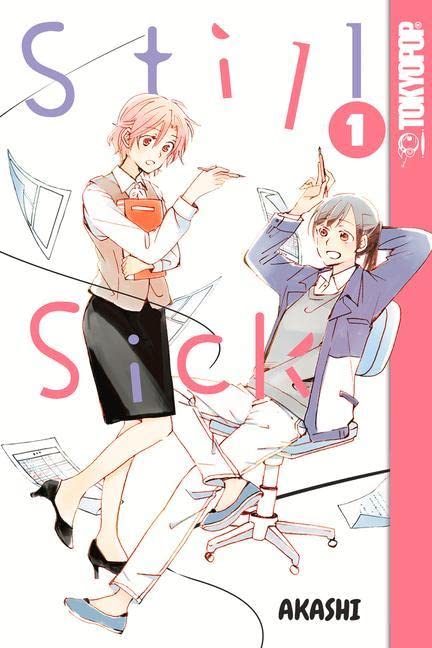
While so many (undeniably great) yuri manga take place in high school, Still Sick stands out by being set in an office environment, and centring around a pair of adult women: Shimizu (29) and Maekawa (25). Shimizu has been working her office job for several years, but secretly enjoys writing and drawing yuri fanfiction manga about her favourite anime. She also takes her fanzines to conventions to sell them.
At one of these conventions, she suddenly bumps into her co-worker, Maekawa, who claims she wandered into the wrong event hall while searching for a different convention in the same building. After Maekawa learns Shimizu’s secret, the tables soon turn and Shimizu learns that Maekawa was once an up-and-coming mangaka who gave up after becoming discouraged by her work and the words of her father.
While the two bond over their shared love of making manga, the strengthening of this bond doesn’t come easy, as Shimizu is eager to encourage Maekawa back into the world of manga creation, but her friend is resistant.
As their professional relationship shifts and their friendship blossoms, so too does the potential for romance. While Shimizu has always loved yuri manga, she has never admitted to her own lesbian identity. Until now. It doesn’t take long for her to realise her romantic feelings for Maekawa, but what will that mean for their friendship and their professional relationship?
This is a mature and grounded yuri manga from a talented creator; one that sets itself apart by presenting readers with a more gradual and uneven narrative that is true to life, while still being wonderfully uplifting.
Buy a copy of Still Sick here!
Failed Princesses by Ajiichi
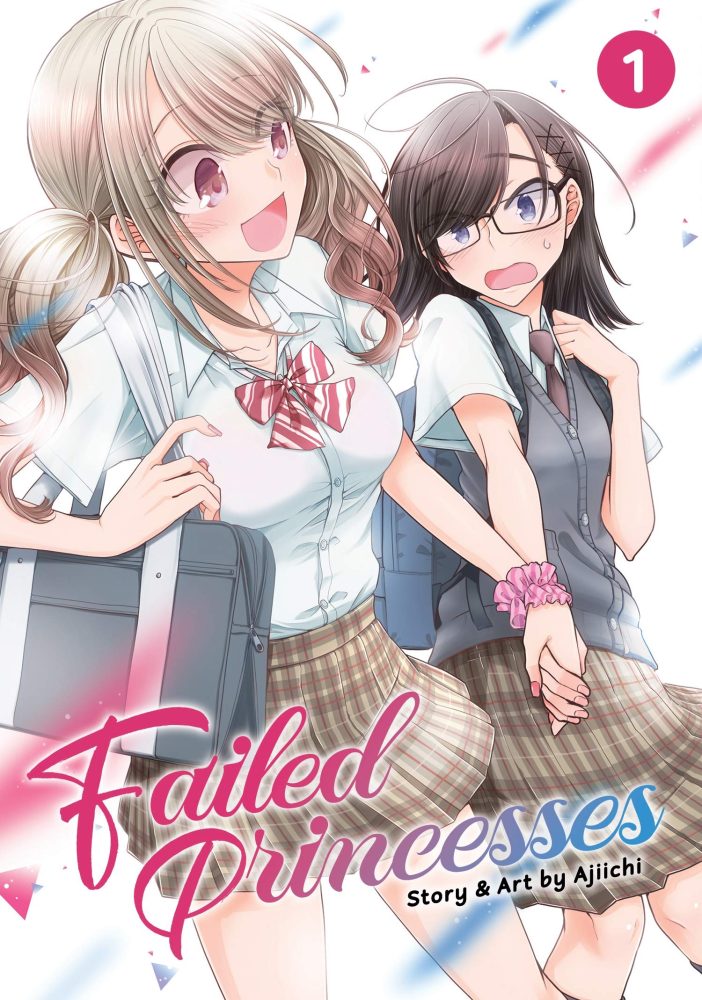
Failed Princesses is a rewarding slow-burn yuri manga that begins, not with the sparks of love, but with the sparks of friendship. Popular girl Fujishiro Nanaki makes no secret about her love of attention and her desire to be seen as the cutest, prettiest girl in the room.
Her classmate, otaku wallflower Kurokawa Kanade, is entirely the opposite. A bookworm and lover of BL manga, Kanade enjoys her unassuming life and the friends with which she can share her interests.
However, these two girls, who normally exist worlds apart, are thrust together when Nanaki’s boyfriend of three months reveals that she was only ever his bit on the side when he is caught cheating. Their at-school breakup wasn’t as secret as they thought — Kanada overheard the whole thing and moves to comfort Nanaki.
And so an unlikely friendship is born, one in which the popular girl sees the cute, endearing side of the wallflower and is eager to get closer to her, while the wallflower digs her heels in but moves closer all the same. As they spend more and more time together and affect one another’s lives, will this budding friendship eventually shift into a budding romance?
The expressive art and narrative flow by Ajiichi, and the funny, charming translation work of Angela Liu, make this a wonderfully rewarding yuri manga to check out.
Buy a copy of Failed Princesses here!
Our Teachers are Dating! by Pikachi Ohi
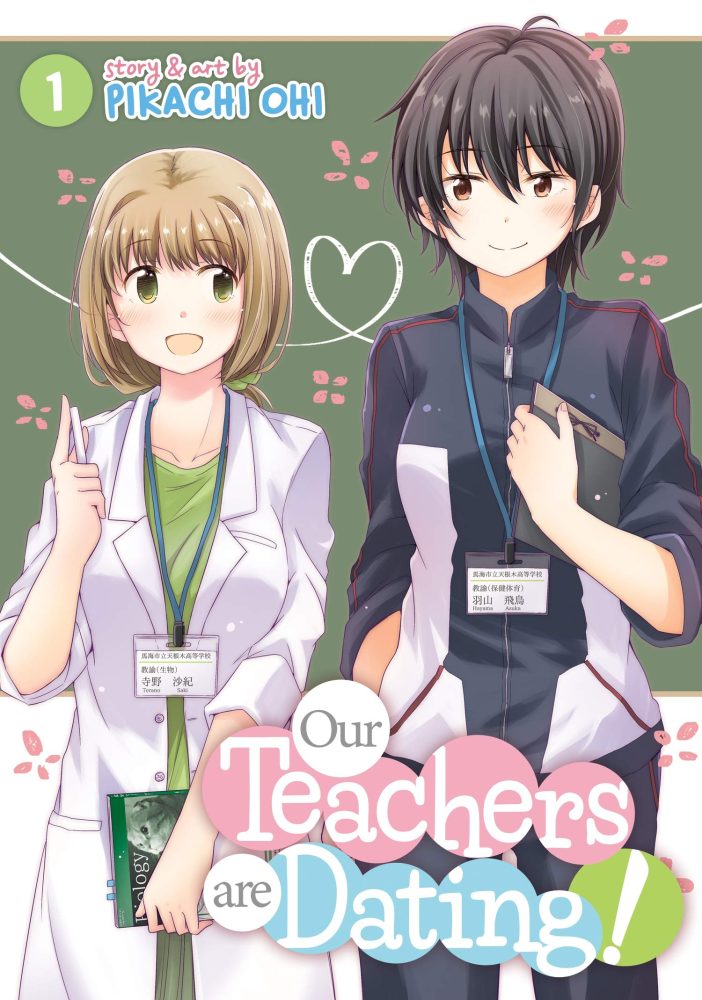
Our Teachers are Dating! is an unapologetically sickly-sweet yuri manga; a consistent stream of dopamine that consists of tender moments, awkward but endearing comedy, and a few very sexy scenes.
This is a lesbian manga that wastes no time getting the ball rolling. Our protagonists, colleagues at an all-girls school, have already started dating the moment the manga begins. Hayama is the school’s gym teacher, and Terano is a biology teacher. Their colleagues have been rooting for them since they met, and it has finally happened. Now we just sit and watch as their romance blossoms.
From their first kiss to their first time in bed together, we read on as these two awkward but sincere lovers fall deeper and deeper into something very special.
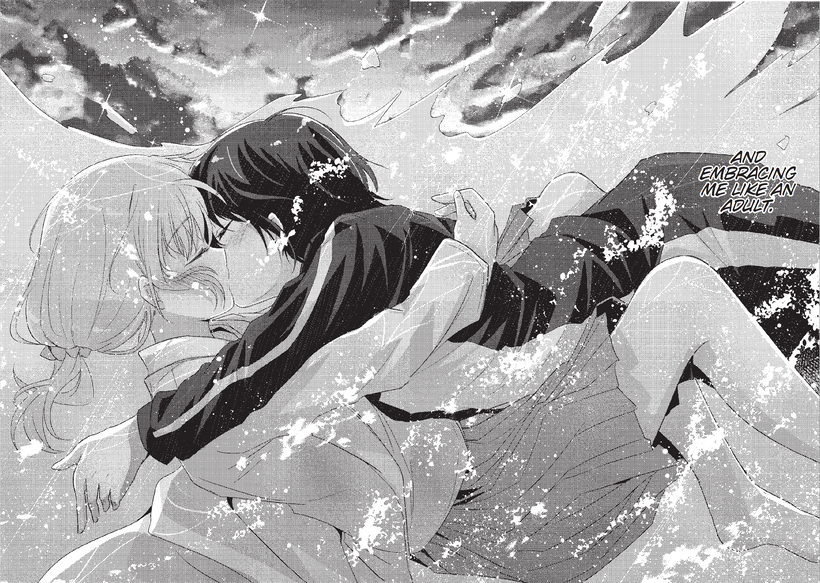
This is very much a fantasy romance. A manga that seems to exist in a world void of men, where homophobia simply doesn’t exist and everyone is always rooting for love. No drama, no obstacles, no maybes — just love and sex and joy. Our Teachers are Dating! offers readers a yuri manga that is pure escapism and a satisfying amount of spice.
It’s not reflective of life, but that’s okay. It’s a fantasy that we all get to enjoy; one full of confessions and firsts, supported by some gorgeous artwork that’s full of dynamic angles and imaginative panel layouts. If you want your yuri manga to be escapist joy, sweetness and charm, this is the one for you.
Buy a copy of Our Teachers are Dating here!
Citrus by Saburouta
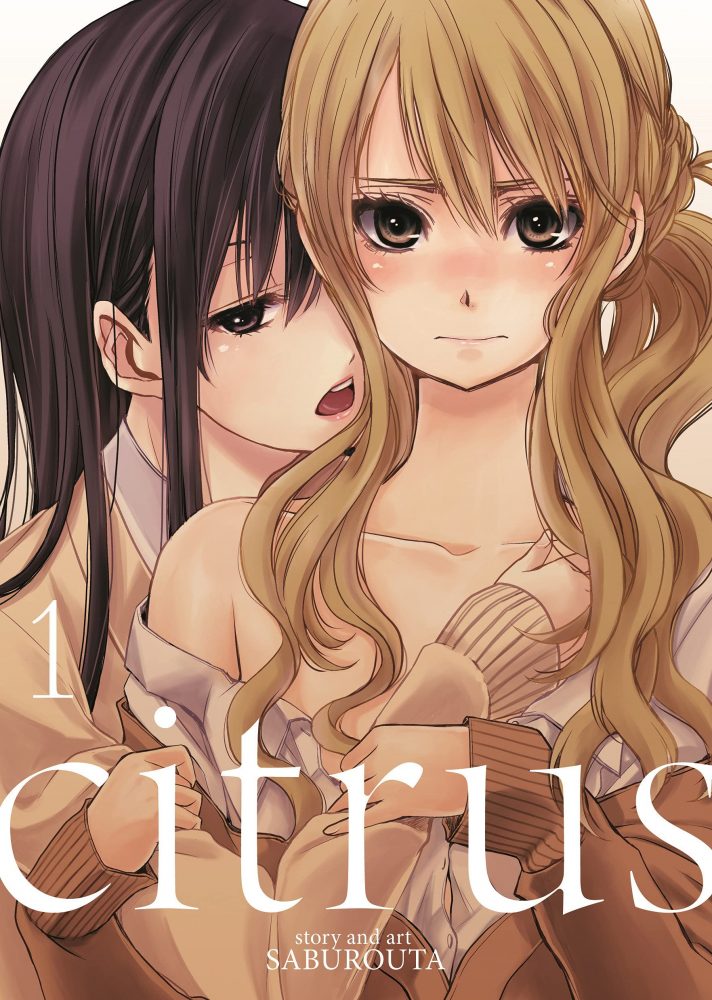
If you have done any previous research into, or have already dipped your toe into yuri manga, then you’ll already be familiar with Citrus. This is easily one of the most popular lesbian manga of all time.
The popularity of the Citrus manga might come as a surprise, considering how its premise is, at first, very reminiscent of more smutty manga and harem manga. Citrus begins with Yuzu, a fashion-obsessed and happy-go-lucky high school girl who transfers to a strict girls’ school after her mother remarries.
At this school, Yuzu quickly makes enemies, the most important of which being Mei, the school’s student body president. Mei is cold, distant, and intimidating. But she also turns out to be Yuzu’s new stepsister. The idea of a budding, troubled, and smoky romance between step-sisters might immediately raise red flags with some readers, but put your trust in Saburouta.
It’s that very implausible plot, the sheer melodrama at play, and the larger-than-life personalities of its opposing yet love-struck characters that make Citrus such an essential yuri manga. The journey from enemies to family to lovers is one you’ll want to see.
The art also pops, with excellent use of shades of grey and big, expressive faces that are very reminiscent of nineties shoujo manga.
My Lesbian Experience With Loneliness by Nagata Kabi
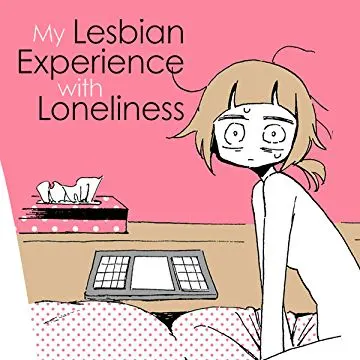
This is one of the most important yuri manga of all time. Although, simply calling it a yuri manga is doing it a disservice. My Lesbian Experiene with Loneliness is a lot more than that. This is, in fact, a piece of autofiction. This manga, and its follow-ups, My Solo Exchange Diary and My Alcoholic Escape from Reality are all autobiographical manga from one of the most important mangaka in the craft.
My Lesbian Experience with Loneliness is a graphic memoir composed with raw and honest pain. It opens your eyes to an important yet painful reality in Japan, all through the use of dark humour, minimalist art, and queer honesty. This is the story of Kabi, a woman who decided against attending university, and spent her early twenties in a haze of depression, drifting through jobs at stores and bakeries and, when she finds the energy to do so, she writes manga.
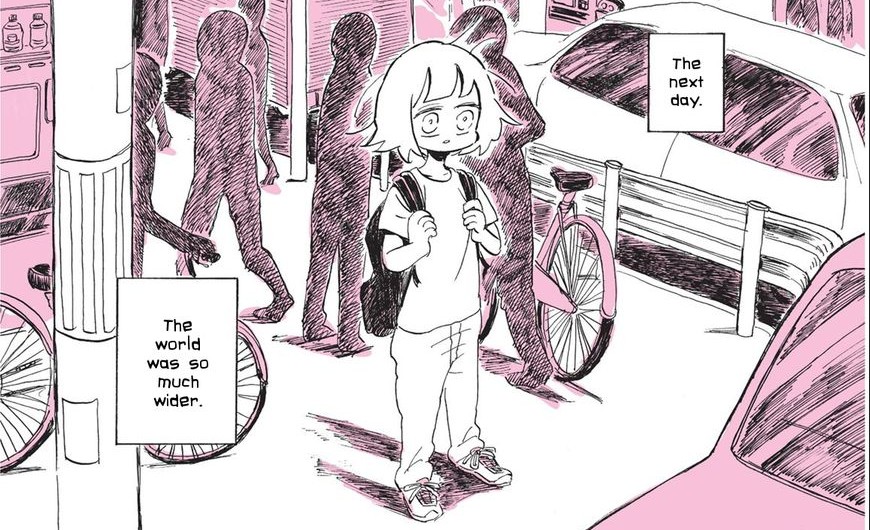
Eventually, as we see in the flash-forward opening pages, she arrives, age twenty-eight, at a turning point. She decides to hire a female escort and a room at a love hotel, in order to learn and understand all that she believes she has missed out on in her youth.
Nagata’s art is wonderfully minimalistic. Rarely is a single background to be seen. Instead, simple line work with gleefully rough and amateurish shading pervades. This forces the reader’s eye to admire the way in which Nagata has managed to depict her own inner feelings outwardly expressed.
Like so much literature on mental health, this yuri manga hugely succeeds at making us feel far less alone in our strangeness. Because we’re not strange, we’re just people.
Bloom Into You by Nio Nakatani
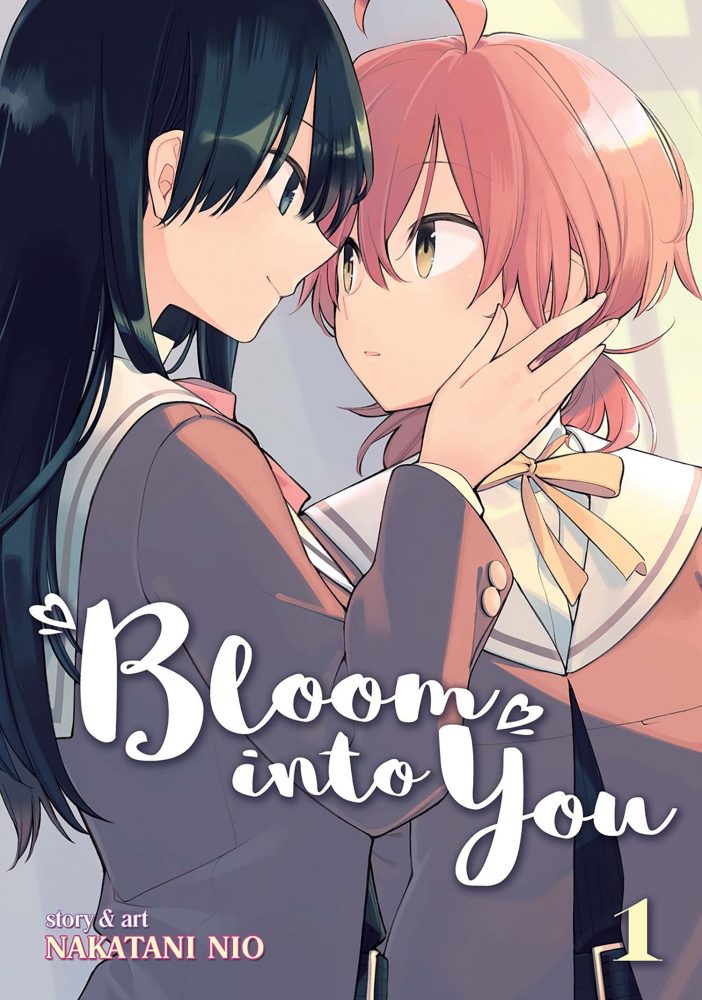
If you’re looking for an easy, sweet, cute, and wholesome intro to the world of yuri manga, Bloom Into You is it, often feeling like a greatest hits of lesbian romance themes, tropes, and characters. Bloom Into You is one of the most popular yuri manga of today, and with good reason. This popularity was also supported by studio Troyca’s lovely anime adaptation of this manga in 2018.
Bloom Into You tells the story of Yuu Koito, a high school girl with an adoration for the stories found in shoujo manga. She dreams of someone confessing their love to her. But when a boy finally does, she feels nothing — much to her own dismay — and turns him down.
When Yuu’s senpai and student council member Touko Nanami also turns down a love confession, Yuu sees a potential kinship blossom. And blossom it does when Touko soon confesses her love for Yuu. Shortly after, Touko runs for student council president, and wins with Yuu’s help as her campaign manager. As president, Touko seeks to revive the tradition of the student council play, which causes tensions between her a Yuu.
Bloom Into You is a sweet and warming yuri manga. Its drama isn’t exaggerated, but grounded and relatable. Its characters are humble and charming. It is, as I said, a fantastic first yuri manga for new readers.
Syrup: A Yuri Anthology
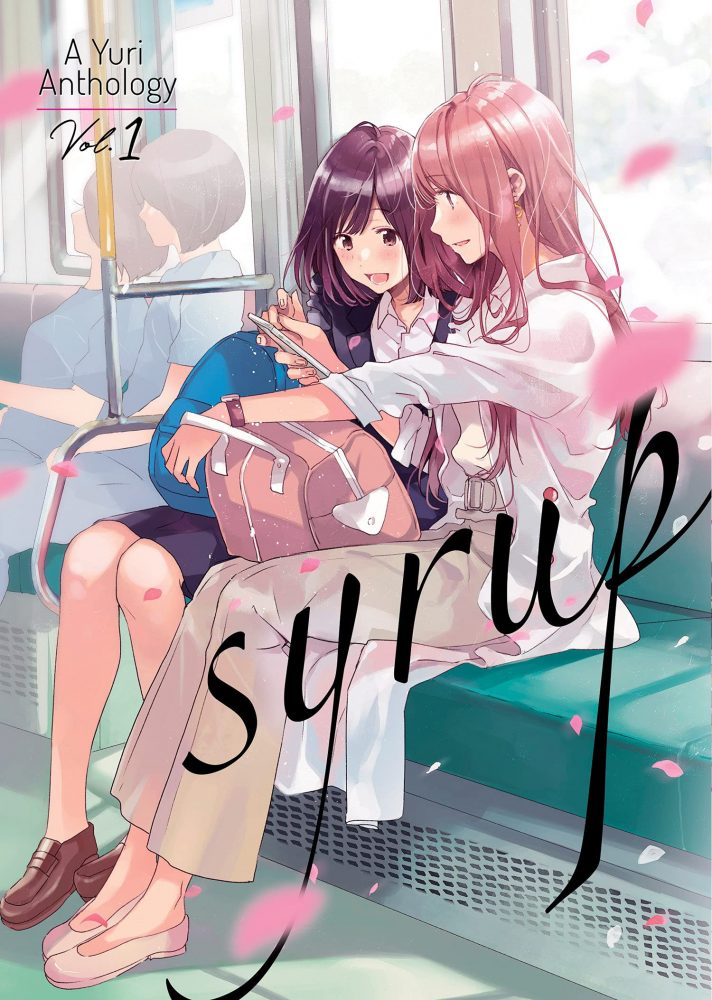
Syrup is an anthology collection of yuri manga short stories. Fourteen stories by fourteen yuri mangaka, including Kodama Naoko, Yoshimura Kana, and Morinaga Milk. Like many anthologies, this one is a mixed bag, both in terms of tone and quality. You’ll find some wholesome shoujo ai tales here, and others that are much more adult and even shocking in tone and events.
While this isn’t ideal reading for younger shoujo and romance manga fans, Syrup remains a worthwhile read for more mature yuri manga readers who may be looking to find some new favourite managaka, or who just want to further broaden their yuri horizons.
I Married My Best Friend to Shut My Parents Up by Kodama Naoko
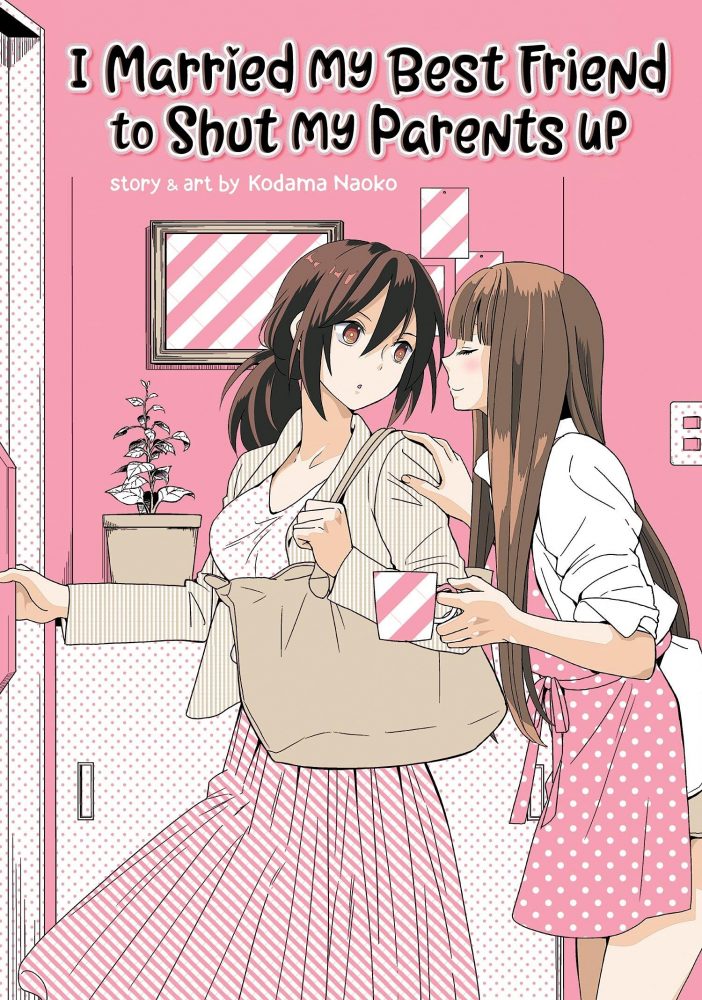
Mangaka Kodama Naoko is a legend of the yuri manga scene. Her series NTR – Netsuzou Trap is a steamy and sexy yuri manga about two childhood friends who, while getting ready for romance, quickly realise they only have eyes (and hands and everything else) for each other.
With I Married My Best Friend to Shut My Parents Up (a manga with a name to rival the silliest of light novels, and a cover reminiscent of the manga of Nagata Kabi), Kodama Naoko has taken a lighter approach to the yuri manga genre.
First of all, the art here is bright and expressive, helping to exude that lighter, sweeter tone with pitch-perfect accuracy. As for the story, the title does a lot of the work. This is the tale of a young office worker, Machi, whose parents are hounding her to get married, settle down, and enter traditional adult life.
In order to stop her parents in their tracks, Machi agrees to enter a sham marriage with her friend and underclassman, Hana, who is currently living with her, and happens to have a crush on her. Machi’s conservative parents are disgusted by the match and so, they’re successfully shut up for the time being, as the title promises.
However, over time, Machi learns that she’s happy in this marriage; that it gives her everything she never knew she wanted; that she was happy to upset her parents and the status quo because she’s now living a truth that was previously hidden. This is not a revolutionary story, nor is it a long one. This is a single-volume manga consisting of just a few chapters. It’s a charming, concise, and joyous yuri manga that serves as another great intro to the genre.
Doughnuts Under a Crescent Moon by Shio Usui
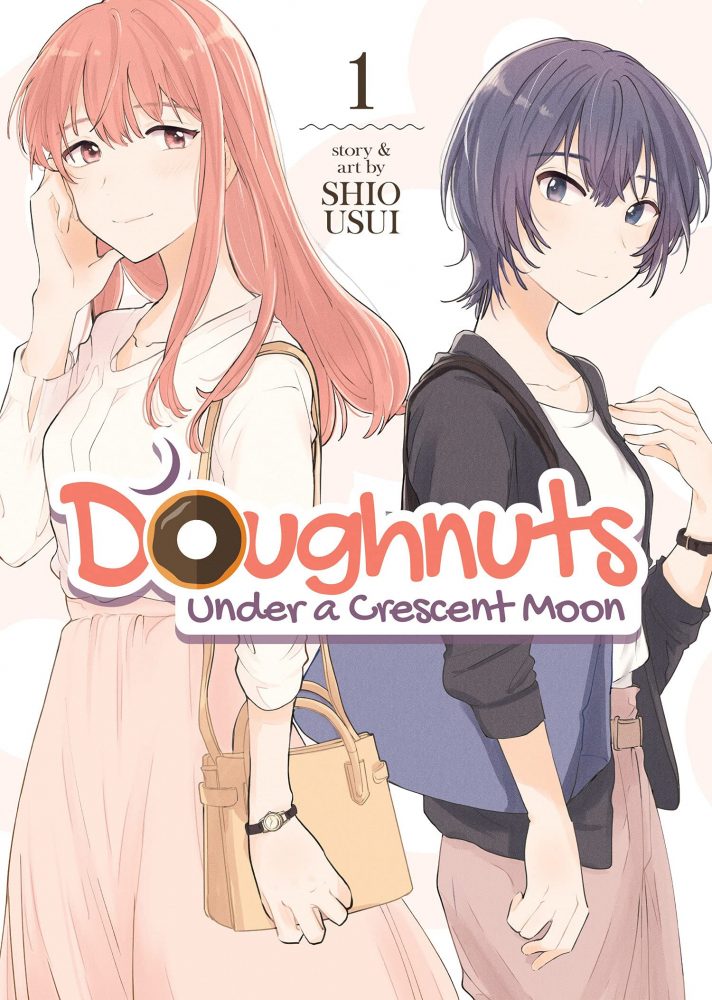
A lot of yuri manga stars, and is geared towards an audience of, teenagers and younger readers (hence why it often falls under the umbrella of shoujo manga). This makes it refreshing when a manga like Doughnuts Under a Crescent Moon comes along.
Doughnuts Under a Crescent Moon follows Hinako, a young office worker with self-esteem issues. She disguises this with a fashionable, put-together exterior, but inside, she is desperate for love, affection, and a normal life that makes sense.
Why is it that what she is seeking — what other people seem to find so easily and so often — seems impossible for her? Anyone who is queer but took a little while to realise it (like myself and many others) will resonate with this feeling enormously.
Why is it that Hianko can’t find a man, fall into a happy relationship, get married, and settle down? The answer arrives when she finds herself daydreaming about her female colleague, Asahi. Much like the novels of Japanese author Sayaka Murata, Doughnuts Under a Crescent Moon is about not fitting the restrictive, heteronormative mould that society has carved out for you.
It’s a poignant yuri manga, full of wholesome moments and fleshed-out characters. It takes its time and is better for it. Doughnuts Under a Crescent Moon will hit any queer reader who realised their sexuality as an adult in a partcularly empathetic way.
SHWD by Sono.N
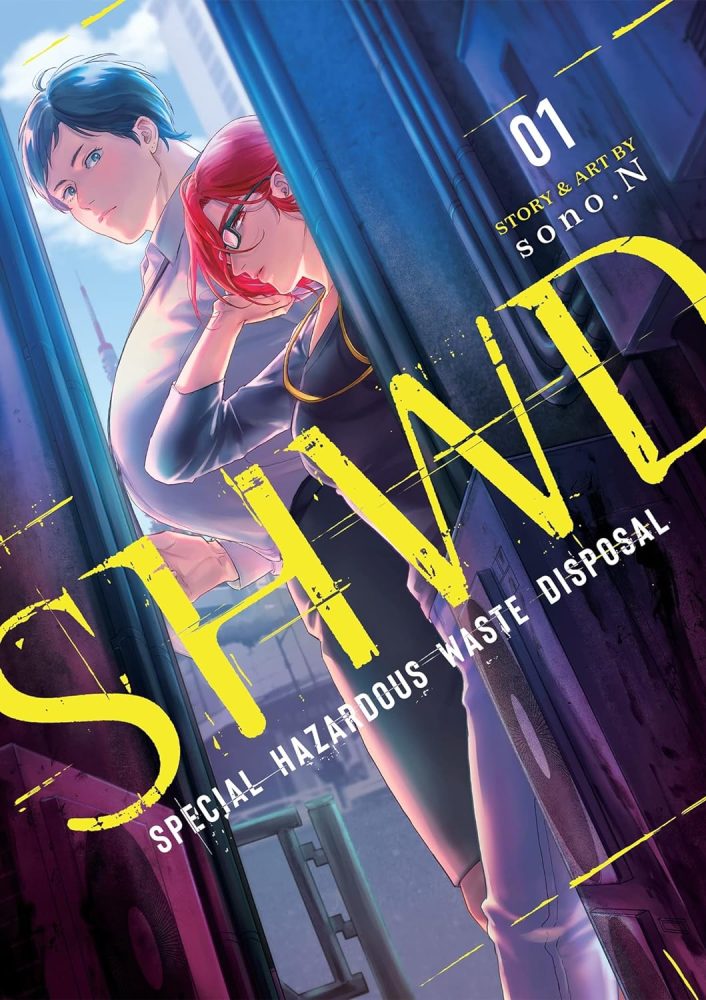
SHWD is a brilliantly unique yuri manga, in that it is also a science fiction action manga that is fully committed to its sci-fi excitement. Our protagonist, Koga, is a butch young woman who has recently joined the titular SHWD (Special Hazardous Waste Disposal): a private military company dedicated to the eradication of mysterious bioweapons that appear in public places, endanger lives, and turn people insane.
When she is recruited to one of Japan’s SHWD branches, Koga is taken under the wing of Sawada, an experienced operative whom she quickly develops a crush on. Their relationship is both helped and hindered by the American Leone, whose closeness to Sawada makes Koga itchy and frustrated.
There is as much action and bloodshed in this sci-fi manga as there is will-they-won’t-they tension. Whether this is a yuri manga in a sci-fi world or a sci-fi manga with a yuri love story is up to you to decide, but one very refreshing thing about it is the focus placed on enormous, muscular butch women, rather than the predictably sweet and femme girls so often seen in yuri manga.
Whisper Me a Love Song by Eku Takeshima
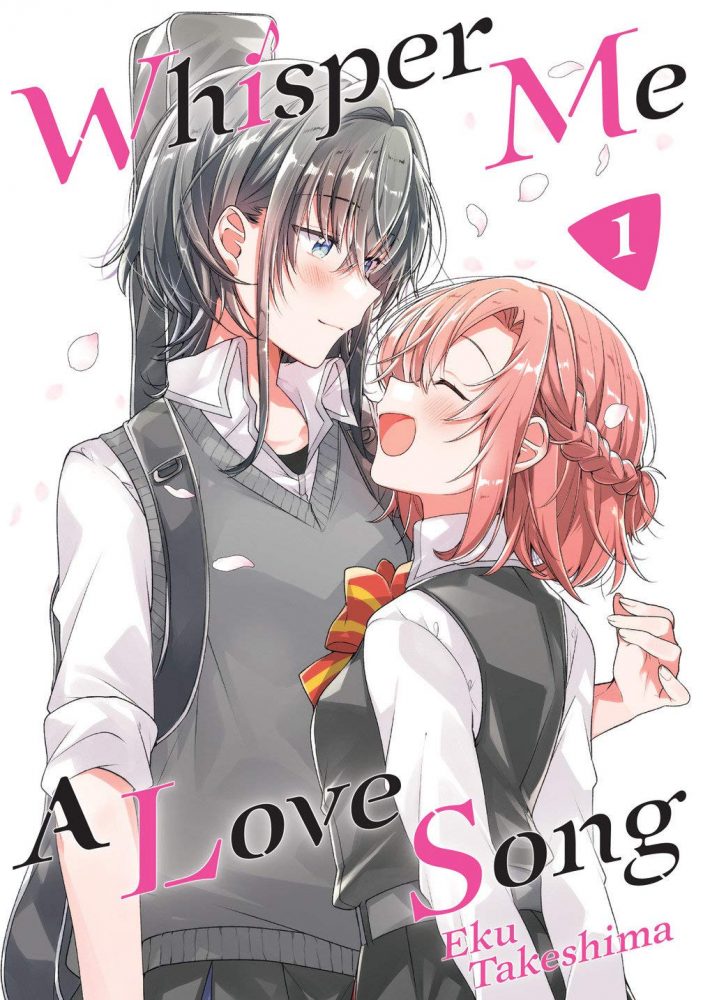
Whisper Me a Love Song is an interesting and deceptively complex shoujo manga. At first glance, it’s a sweet young yuri tale of blossoming love. But it also has a lot to say about different interpretations of love. Himari is a young high-schooler who finds herself enamoured by her senpai’s voice during a musical performance, and wastes no time in telling Yori that she “fell in love at first sight”.
Yori takes this to mean that Himari fancies and wants to date her, which isn’t the case. It’s a case of misunderstanding, but with a spark of potential growth and blossoming. From here, we are treated to so much intimate time with these two young girls. We get to know them as individuals, while also watching their relationship develop and take on different forms.
Eku Takeshima’s art is some of the best in the yuri manga space. Whisper Me a Love Songpops with vibrancy and texture. Her character designs hearken back to the 90s era of shoujo manga while also being something wholly and recognisably her own.
Our Wonderful Days by Kei Hamuro
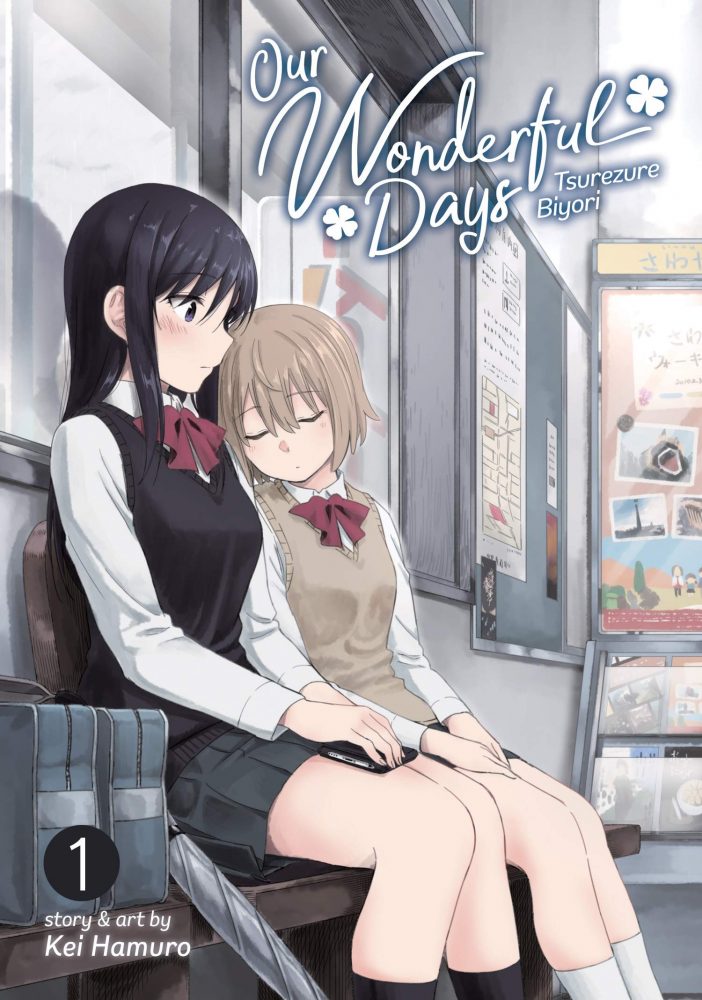
While many yuri manga can also be bracketed within the slice-of-life genre of shoujo manga, this is more true for Our Wonderful Days than perhaps any other. This manga is about the ordinary, sweet daily lives of four high school girls out in the Japanese countryside.
If you’re a fan of the manga/anime Laid Back Camp, you’ll get the vibes I’m describing here. But the difference with Our Wonderful Days is that it is also a yuri manga; it blends the slice-of-life and shoujo-ai genres seamlessly and beautifully.
Our Wonderful Days is perhaps the most beautifully-drawn manga you’ll find here. Hamuro’s character art, her knack for facial expressions, and her depictions of peaceful, calming rural life are second to none. As for its plot, Our Wonderful Days is a pseudo-episodic manga told across just eighteen chapters (or three volumes). It focuses on the daily lives and growing relationships of its four protagonists.
Two of those protagonists were friends in elementary school until one moved away. Now that she’s back, a romance gradully buds and blooms. This is a yuri manga that showcases the ordinary beauty of ordinary life in a rural town, just as its name implies. This is a beautiful, soothing, warming manga, essential for fans of the slice-of-life and yuri manga genres.
5 Seconds Before a Witch Falls in Love by Zeniko Sumiya
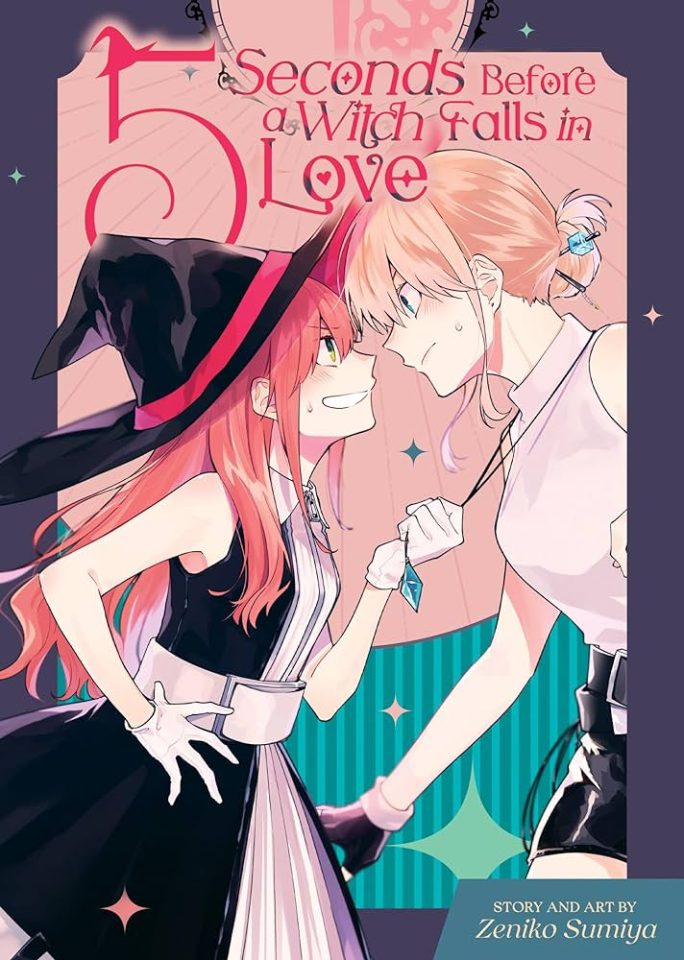
The first volume of 5 Seconds Before a Witch Falls in Love is a collection of three one-shot sapphic manga. The first chapter is a cat-and-mouse game between the powerful sorceress Meg and the witch hunter Lilith. As they fight and toy with one another, their true feelings bubble to the surface. First Meg’s, then eventually Lilith’s. In this chapter, Meg turns Lilith into a cat but must soon come to her rescue when she’s stolen.
In the manga’s second chapter, Demon’s Harem, we follow a teenage girl who is able to see supernatural things. When she saves the lives of an angel and demon, both find themselves falling for her and staying invisibly close to her side. When an exchange student moves in and starts to monopolise all of Kanna’s time, the angel and demon grow jealous, but there’s something not quite right about this girl.
Finally, the manga’s third chapter is a sequel to the first, returning us to Meg and Lilith. The witch hunter believes she has been enchanted; she gets weak at the knees whenever the sorceress is around, and she’s sure it’s the work of a love spell. And so, she chases Meg down to try and get the spell reversed. That is, if there’s any such spell at all. This Yuri manga is a fun and adorable treat from beginning to end.
A Tropical Fish Years for Snow by Makoto Hagino
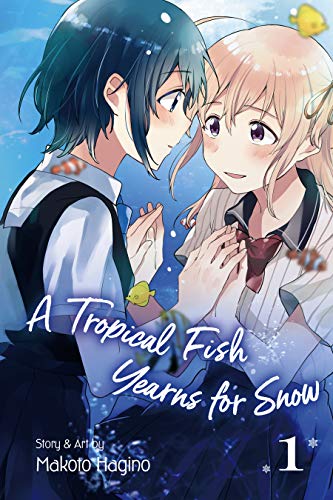
A Tropical Fish Years for Snow is another delightfully drawn manga with a simple but heartwarming premise. Across the shoujo and shounen spaces, a high-schooler being forced to join a club is a trope we’ve seen a hundred times. It often leads to confusion, shenanigans, and new friends. The same is true for A Tropical Fish Years for Snow.
Konatsu Amano’s father has moved overseas for work, which means that his daughter has had to leave Tokyo to go live with her aunt in a sleepy seaside town. New town, new school, new friends.
When she is required to join a club, Konatsu is at a loss, until she stumbles across the Aquarium Club and her new classmate Koyuki Honami, who begins by asking her: “Do you like salamanders?” From here, romance blooms.
Strawberry Shake Sweet by Hayashiya Shizuru
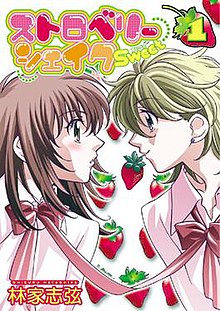
Strawberry Shake Sweet is a yuri manga that ran from 2003 to 2008, and has become a cult classic of the genre since it finished. Despite its five-year run, this shoujo manga is only two volumes long, making it delightfully compact.
Our protagonist, Julia Tachibana, is a young idol, a shining talent of Shanghai Talent Limited. She takes on the new talent Ran Asakawa, whom she is initially jealous of, but soon falls for.
Strawberry Shake Sweet is easily one of the funniest yuri manga ever written. The slapstick comedy is always on point and the jokes that arise from misunderstandings, or from Julia’s constant struggle to express her feelings while trying to be professional, are hysterical.
Octave by Haru Akiyama
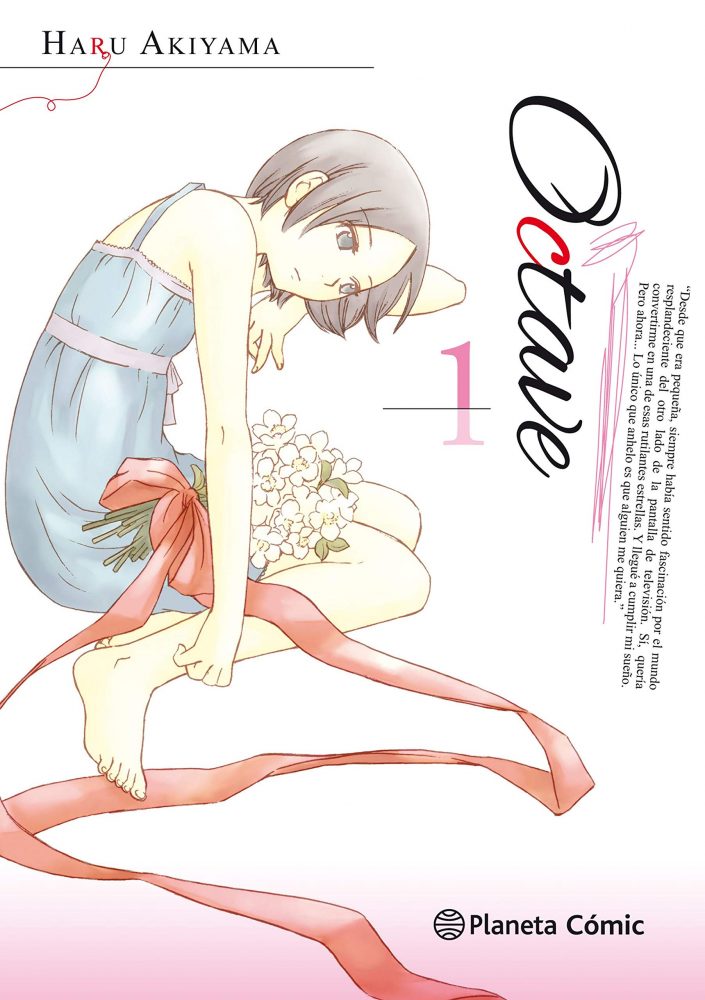
Octave is another absolute classic of the yuri manga genre. And what makes this a particularly excellent manga is its rawness and its maturity. Octave is not a feel-good bubblegum story. It’s difficult and, for that reason, relatable.
Yukino Miyashita is eighteen, and a former teen idol. She grew up with stars in her eyes and, at fifteen, joined an idol group with minimal success. Now, at only eighteen, she feels like a failure.
After choosing to move back home and reassess her life, Yukino meets a former composer named Setsuko Iwai, with whom she becomes enamoured. This is a hard-hitting manga about a person coming to realise that life is worth living, no matter what. After failure and disappointment, life continues and changes shape, and that’s okay.
Yukino is a wonderfully well-realised protagonist, and Setsuko is far more than just a love interest. Haru Akiyama paints her characters with love and attention. They are real, tragic, flawed, aspirational, frightened, hurt, and vulnerable, and you’ll love them for it.

